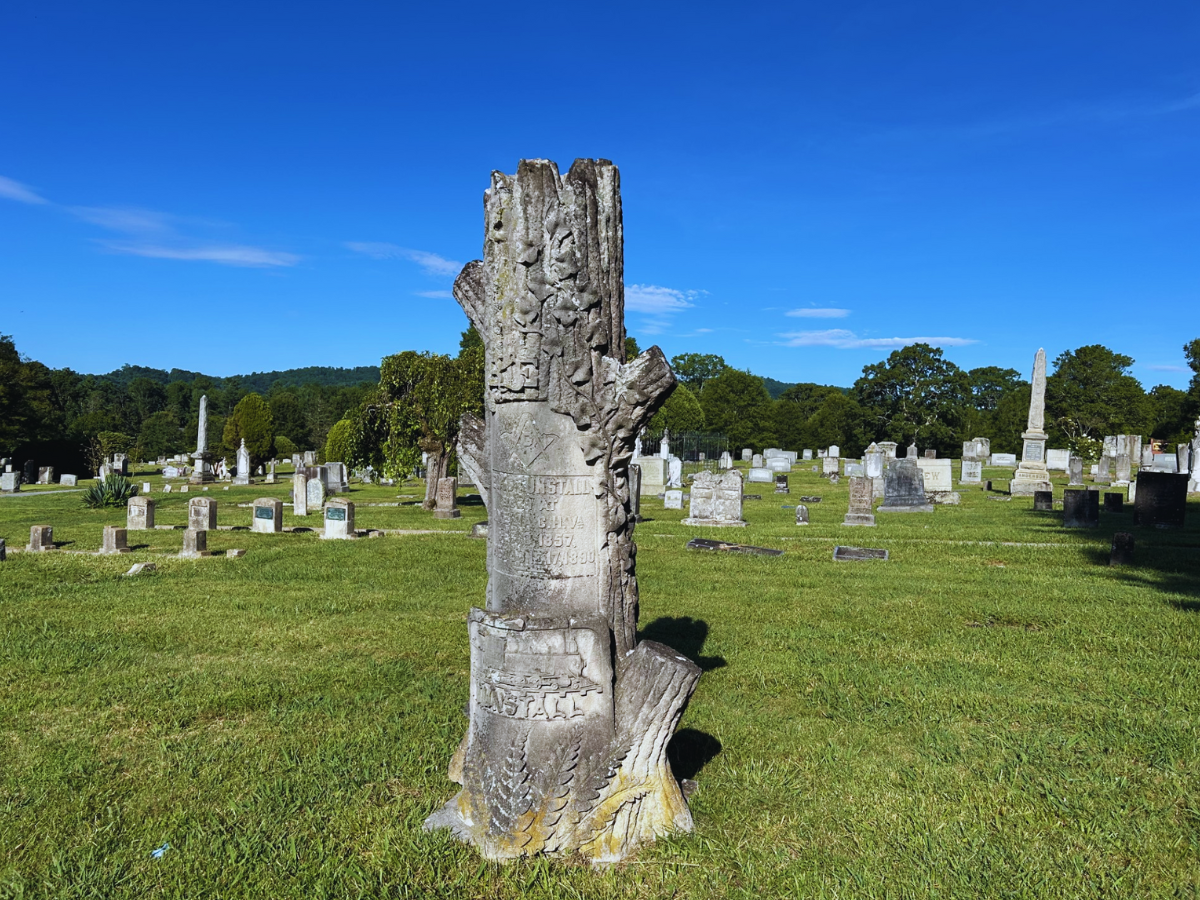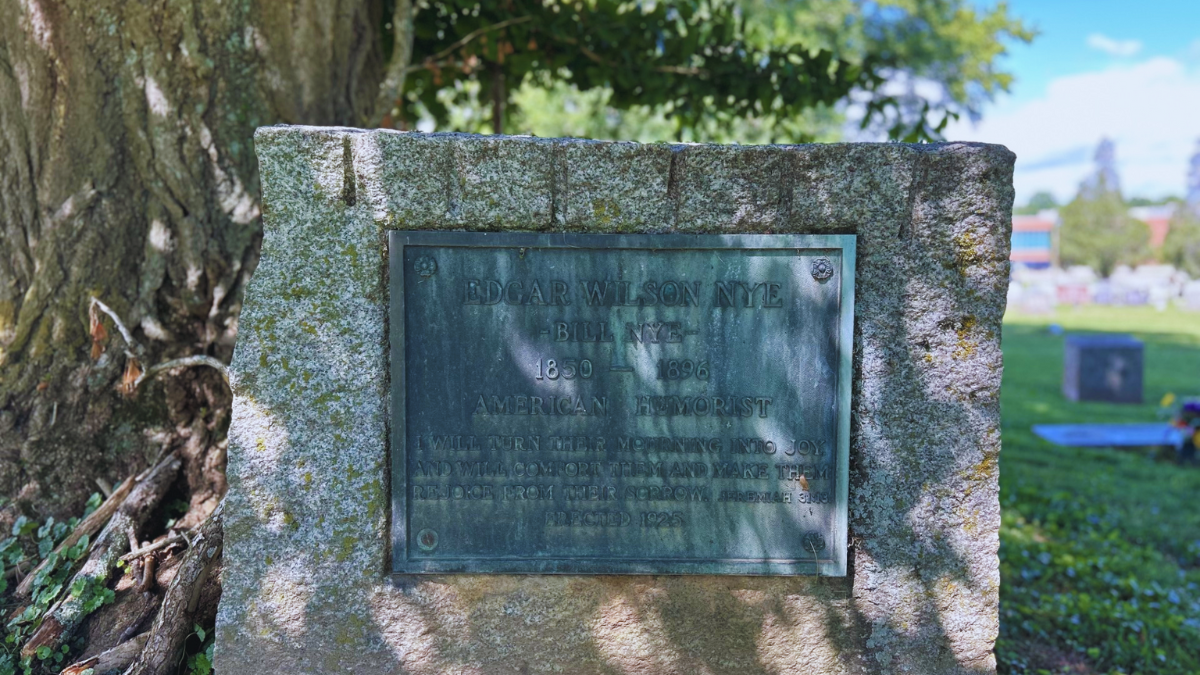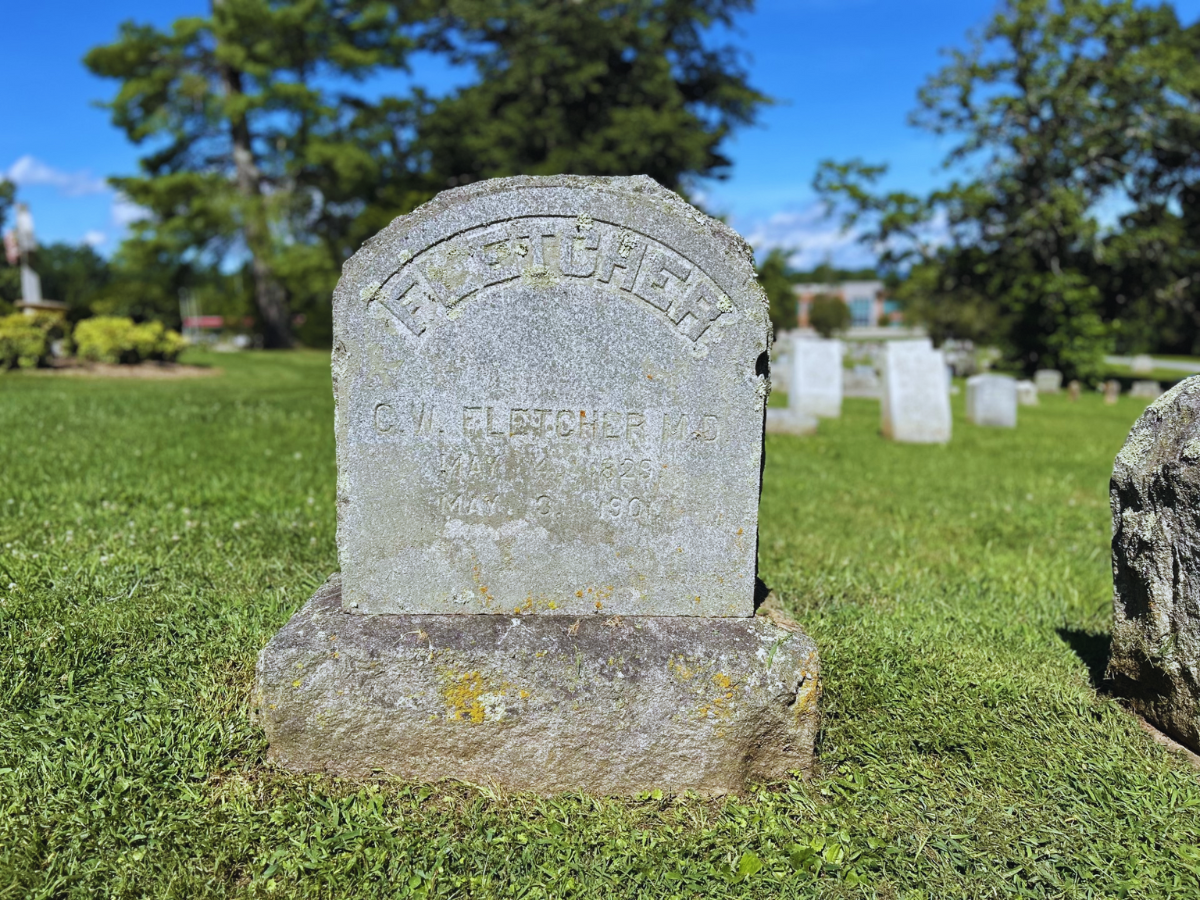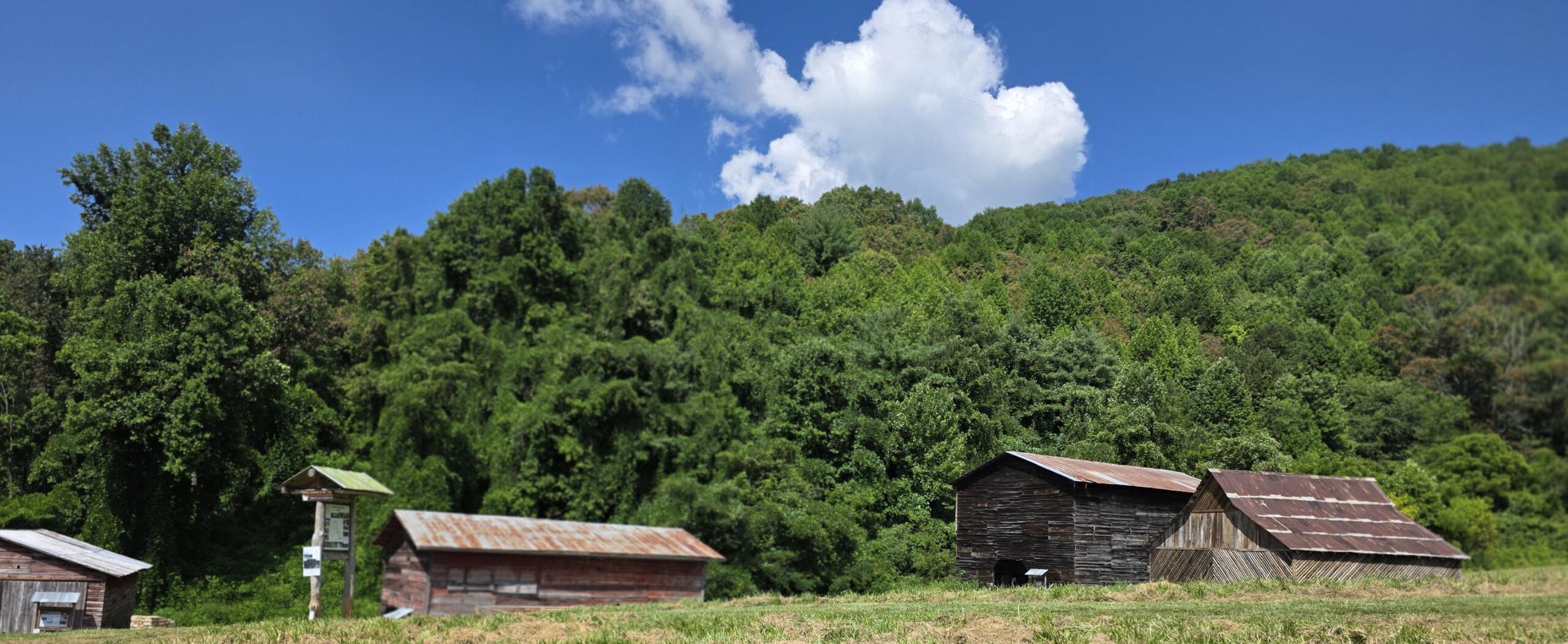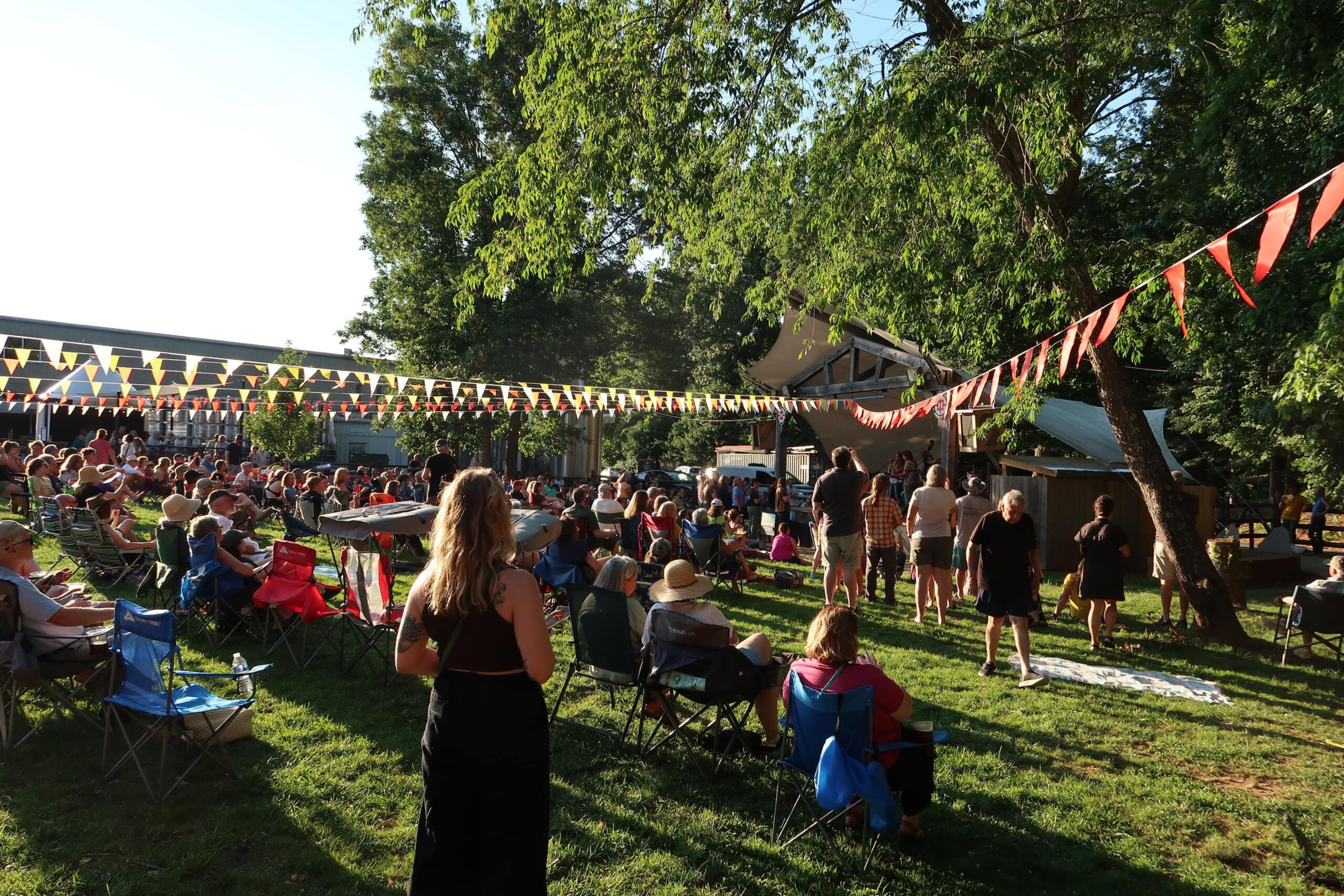Editor’s Note: Western North Carolina is rich with untold stories—many resting quietly in local cemeteries. In this Tombstone Tales series, we explore the lives of people from our region’s past whose legacies, whether widely known or nearly forgotten, helped shape the place we call home.
HENDERSONVILLE, N.C. — On a June night in 1890, a freight train barreled down the steep Saluda Grade at more than 70 miles per hour. The brakes failed. Within minutes, the train jumped the tracks and slammed into a chestnut oak, killing three crewmen and injuring several others.
Among the dead was engineer Lewis Tunstall, a man regarded as one of the most trusted operators on the Asheville & Spartanburg Railroad. His death, and the catastrophe that claimed the lives of two fellow railroaders, led to critical safety changes on one of the most dangerous stretches of railroad in the South.
A Descent into Disaster
On June 17, 1890, freight train No. 11 departed Asheville, bound for Spartanburg with ten cars of coal. The train was met at the crest of the Saluda Grade, a notorious stretch of track that dropped an average of 237 feet per mile, by Tunstall and his helper engine. His task was to assist the train down the grade, keeping its speed under control.
As the train started its descent past the tiny station of Melrose, something went wrong and the brakes failed on the slick, wet rails. Newspapers later described the runaway as a “mad rush,” the cars gaining speed until the train was hurtling downhill at an estimated 75 miles an hour.
With no way to slow, the train left the tracks after three miles, toppling into wreckage along the mountainside.
Three Lives Lost
The wreck claimed the lives of three railroad men.
Engineer Lewis Tunstall was crushed beneath his engine. Engineer J.J. Smyer and Fireman William Taylor died instantly in the chaos. Others aboard the train survived but with grave injuries. Flagman C. Bowcock suffered both legs broken. Brakemen Ed Foster and Greenlee escaped with lesser wounds, though Foster reportedly lost his sight.
The wreckage was so complete that railroad officials rushed a relief train with surgeons and undertakers to the scene. The loss in engines and cars was estimated at $75,000, roughly $2.5 million today, but the greater loss was measured in human lives.
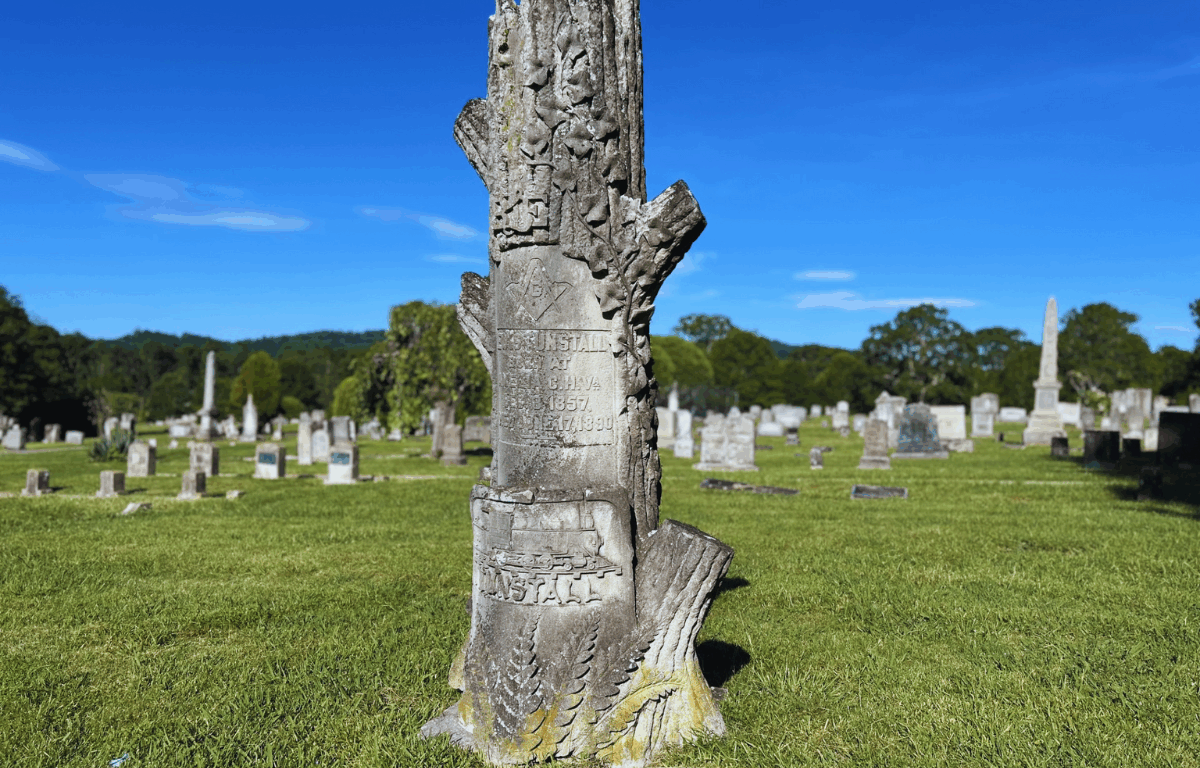
A Shock to Railroad Men
The wreck stunned the region. Railroad officials had long insisted that such a disaster on the Saluda Grade was “almost impossible.” Precautions were taken at Melrose, where an engine was kept ready to help trains up or down the mountain. Conductor George Ricketts, one of the most respected men on the line, had overseen the doomed train.
No skill or precaution could stop a fully loaded coal train when its brakes failed on the steepest mainline grade in the country.
Changes That Followed
In the aftermath, the Asheville & Spartanburg Railroad faced a grim truth: the Saluda Grade could not be safely operated without further protections. Soon after the crash, safety switches were built between Saluda and Melrose. These runaway tracks were designed to divert uncontrolled trains into gravel beds and prevent them from plunging down the mountain at deadly speed.
The design meant some trains still suffered damage, but far fewer lives were lost. Those changes saved countless people in the decades to come, making the Saluda Grade safer for those who worked it.
Remembering Tunstall
Today, the story of Lewis Littleton Tunstall lives on not only in the history of rail safety, but also in Hendersonville’s Oakdale Cemetery, where he is buried beneath one of its most distinctive monuments.
Tunstall’s marble headstone is carved in the form of a large tree stump, its limbs cut short. Ferns climb from the base and ivy winds near the top, symbols of life cut short and memory enduring. Above his name, a square, compass, and the letter “G” honor his membership in the Freemasons, while the carved letters “BLE” stand for the Brotherhood of Locomotive Engineers.
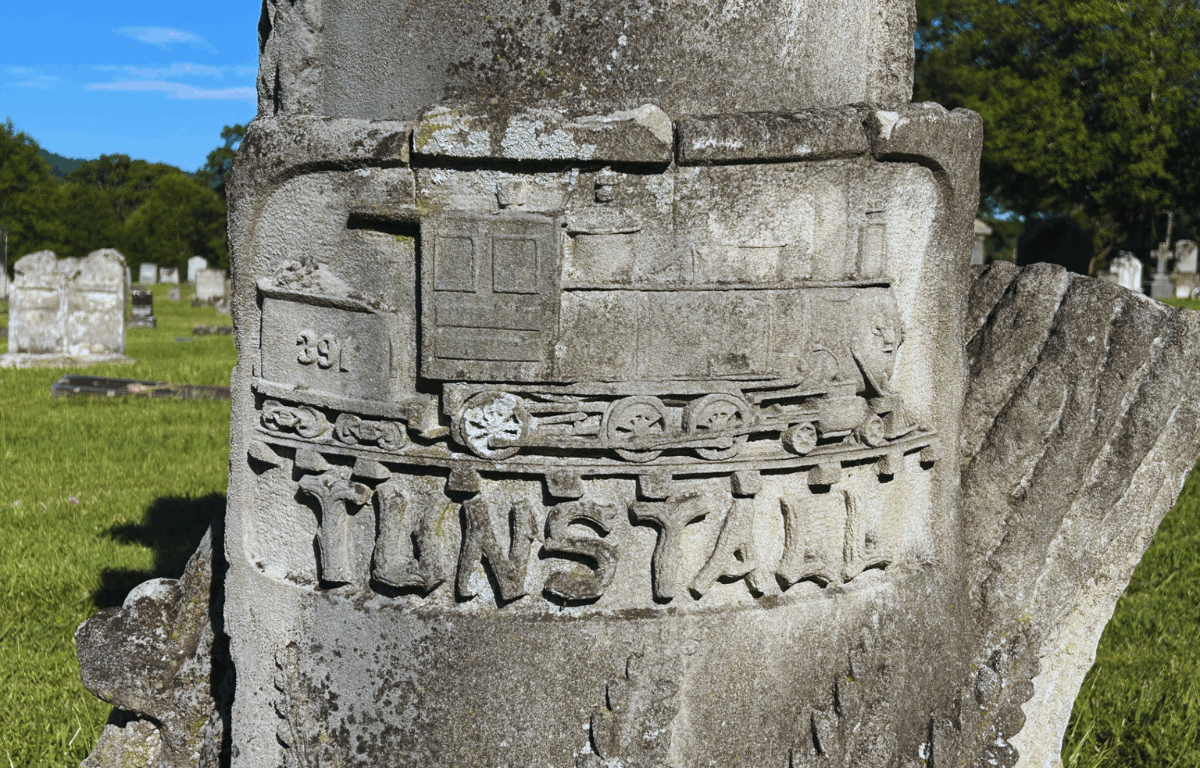
The memorial captures both his profession and his brotherhood, ensuring that visitors more than a century later understand the life he lived and the role he played in one of Western North Carolina’s most defining railroad tragedies.
Every train that descended safely through Saluda in the years after 1890 owed something to the men who perished that June night. Their deaths brought change, and their memory endures in a story that transformed tragedy into lasting safety.
Oakdale Cemetery in Hendersonville, North Carolina
[wpgmza id=”34″]
-
Tombstone Tales: Kenneth Noland, Asheville’s master of color and form
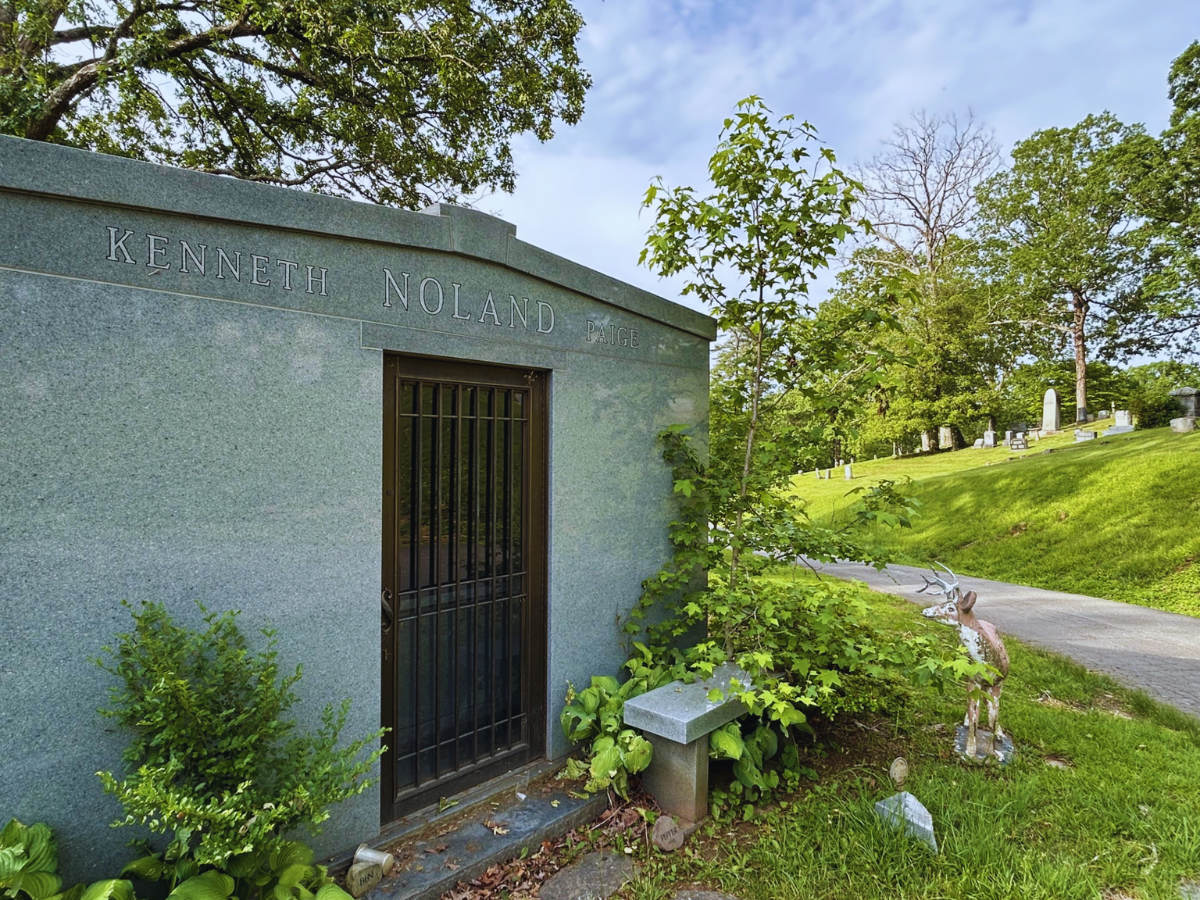
Explore the life and legacy of Asheville native Kenneth Noland, a pioneer of abstract art, and the story behind his walk-in mausoleum in Riverside Cemetery.

